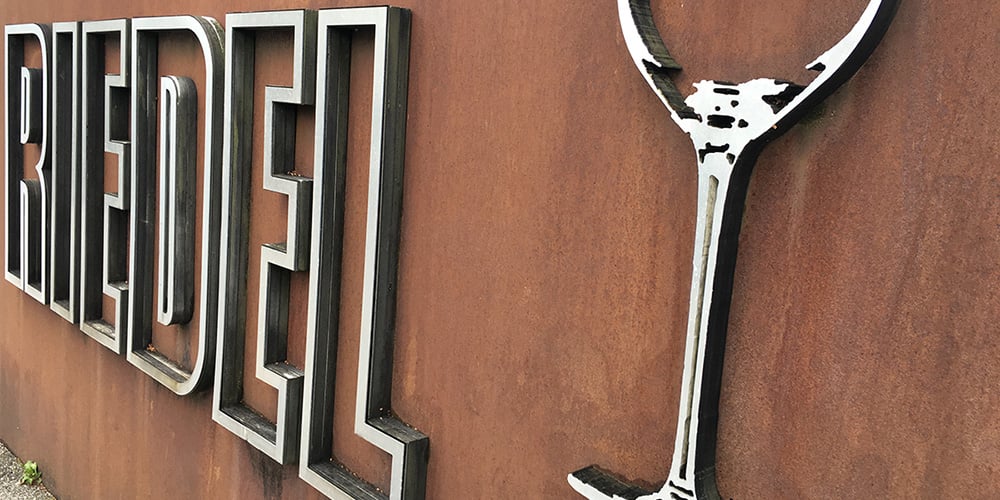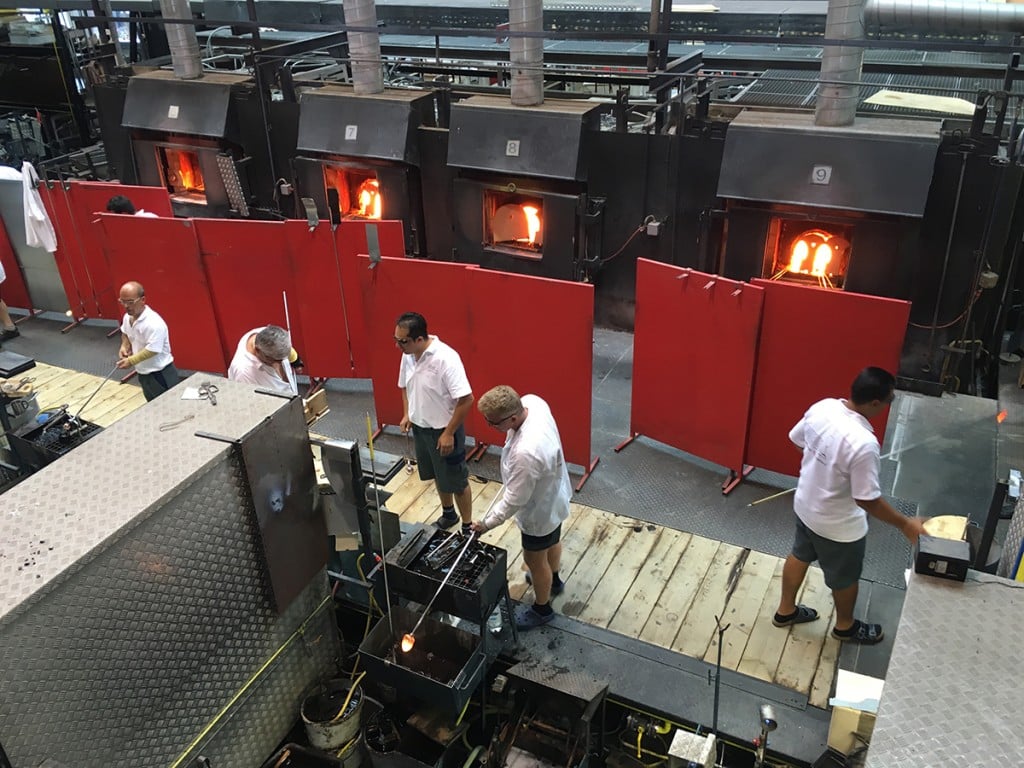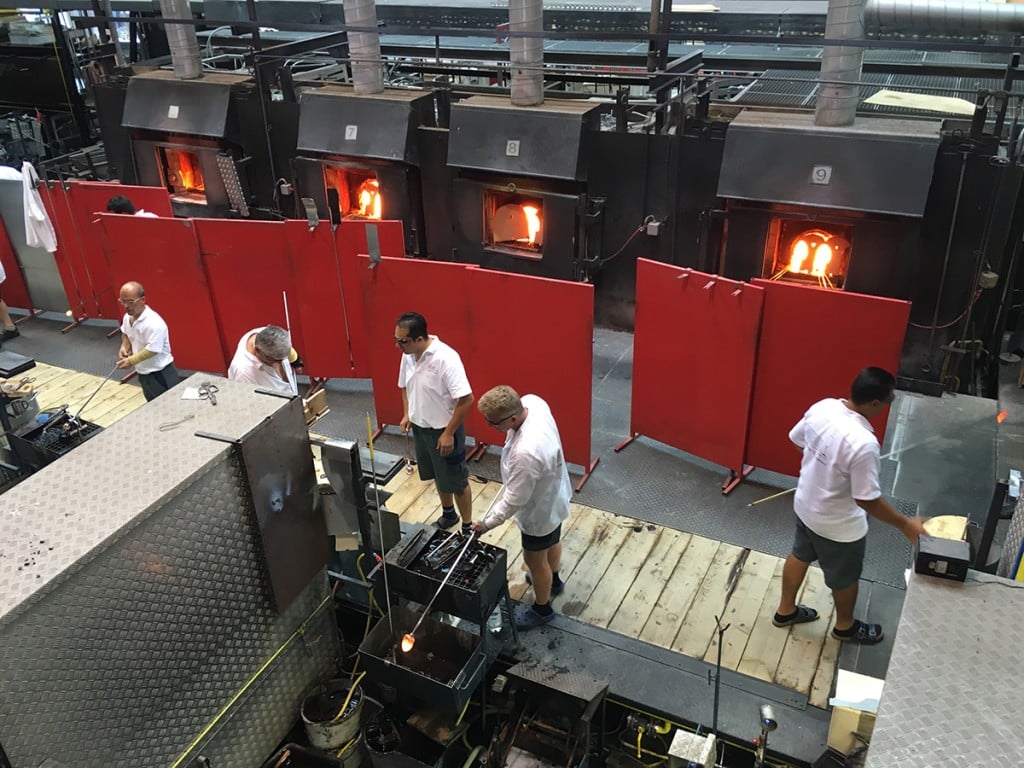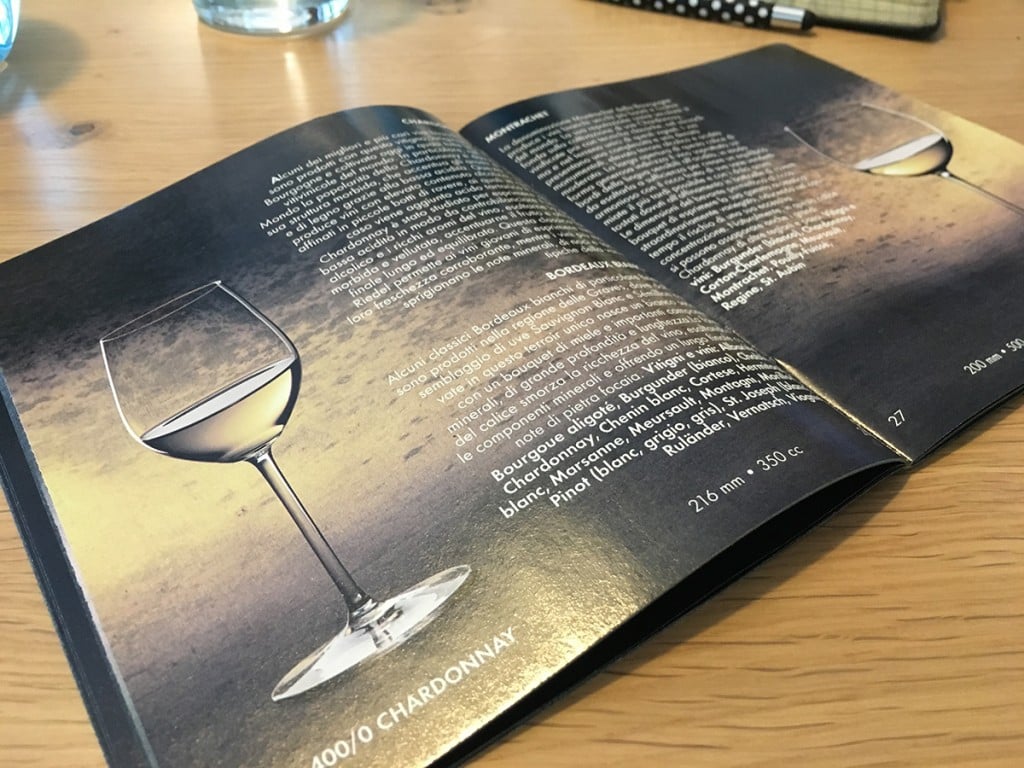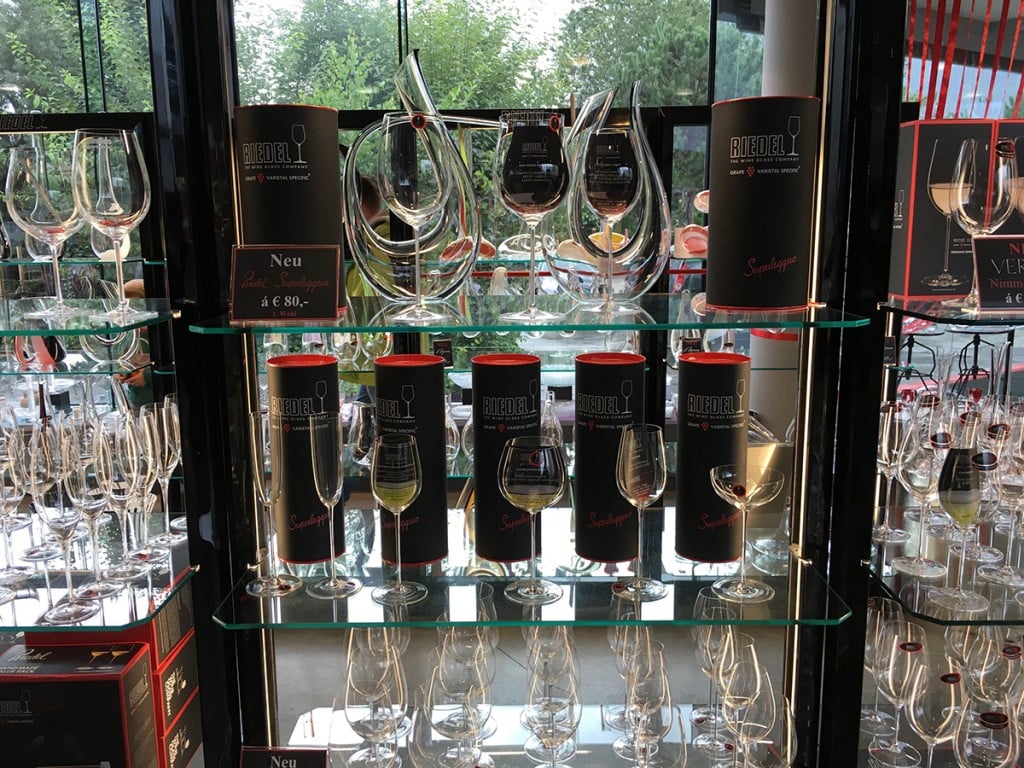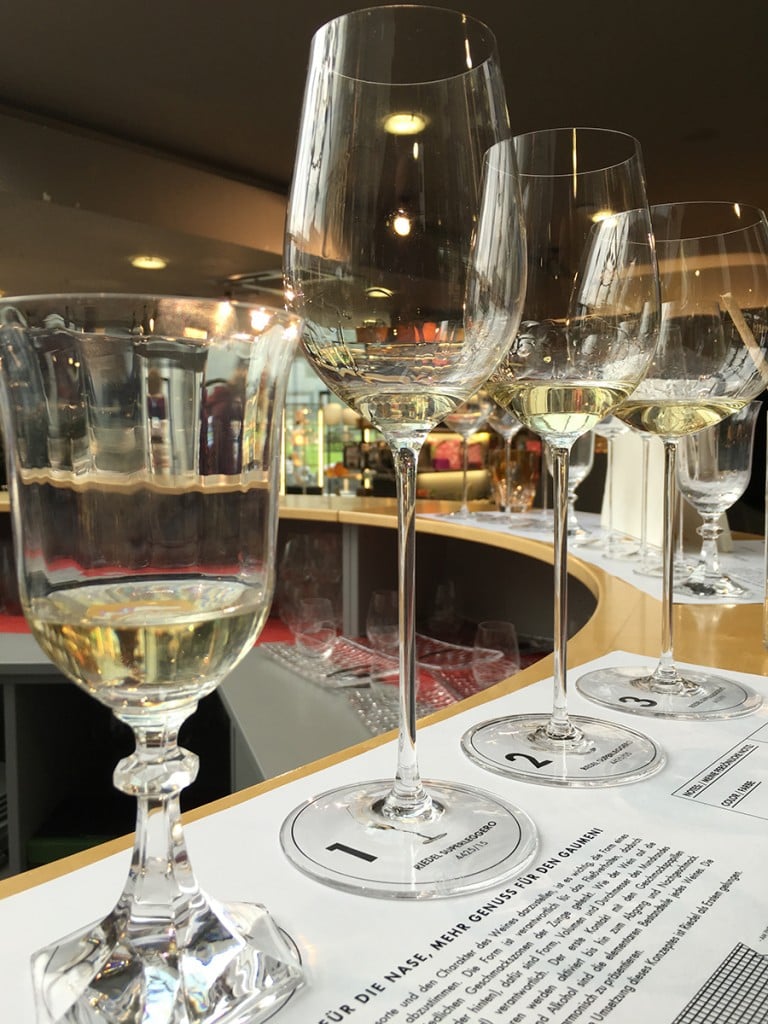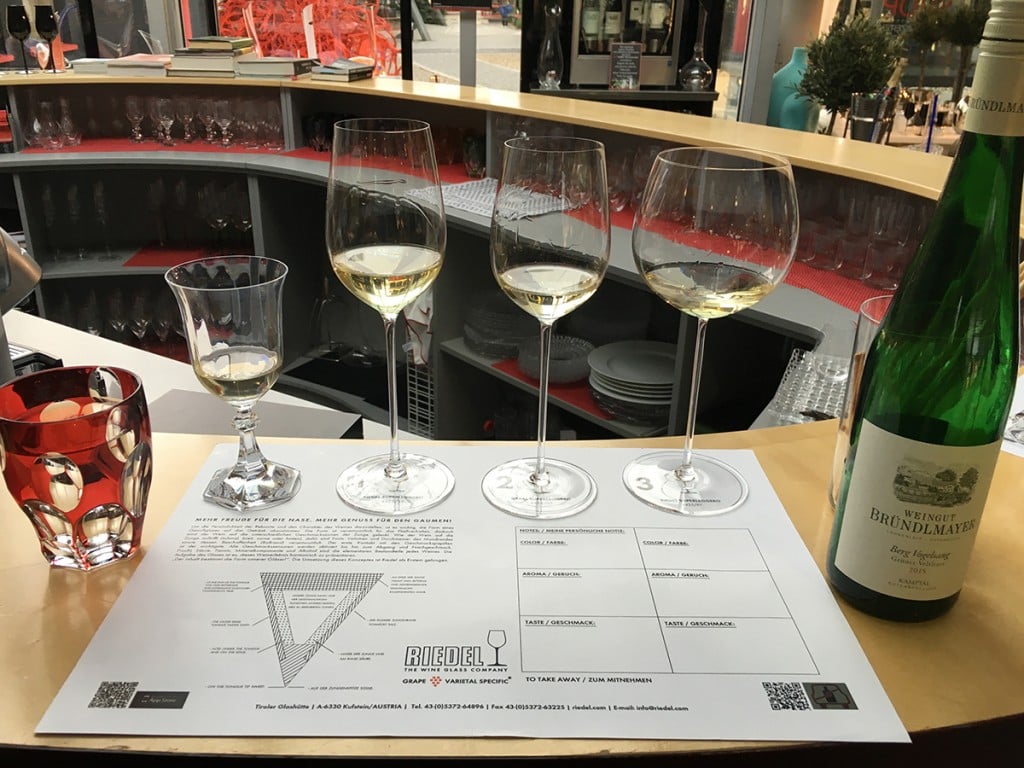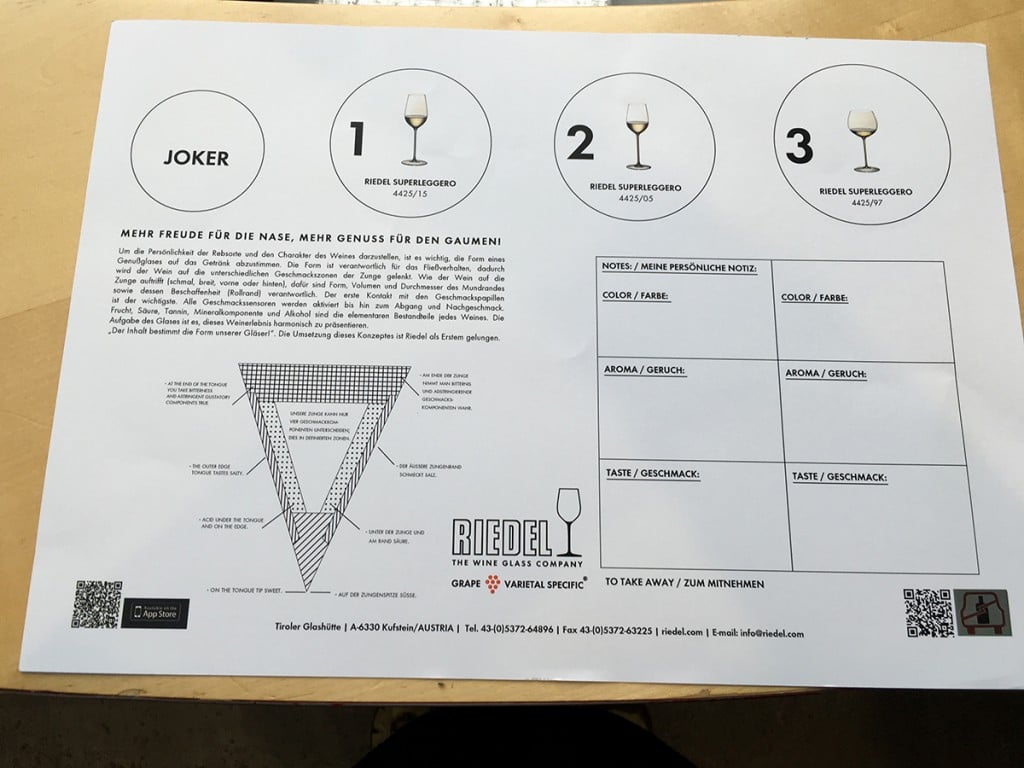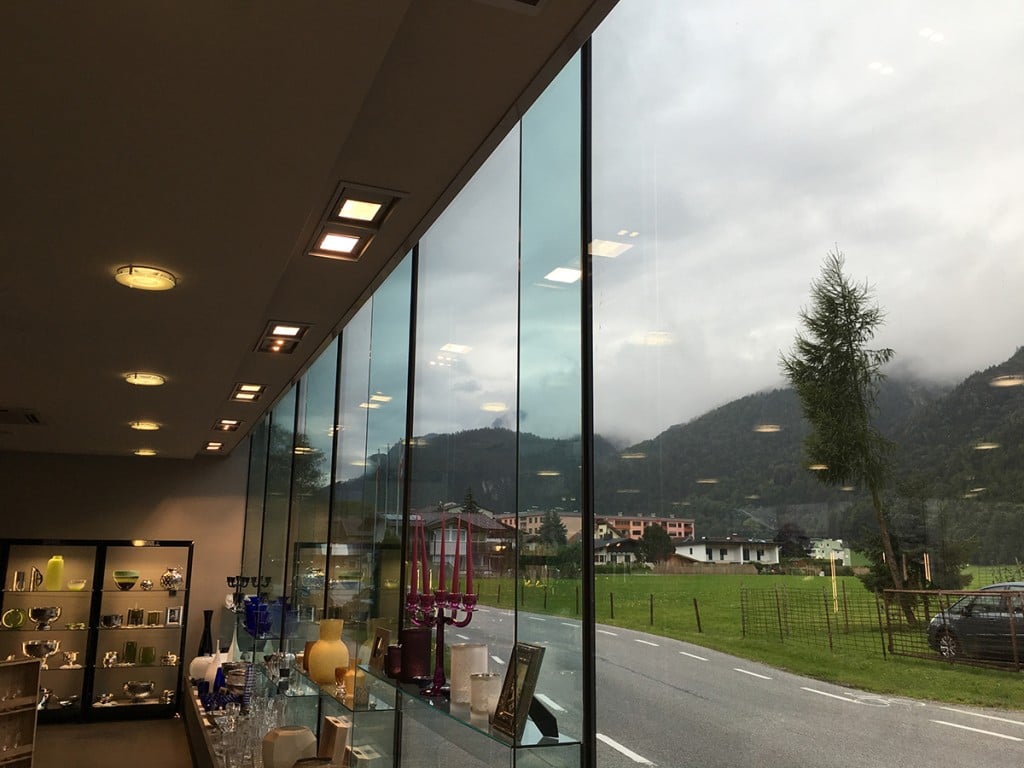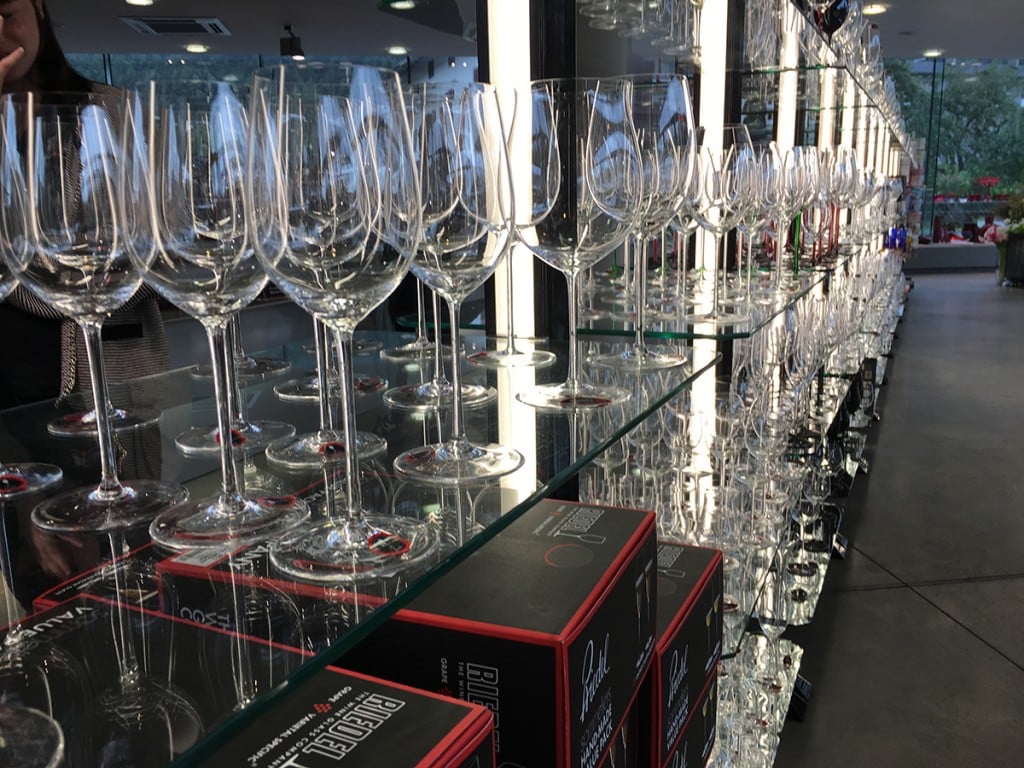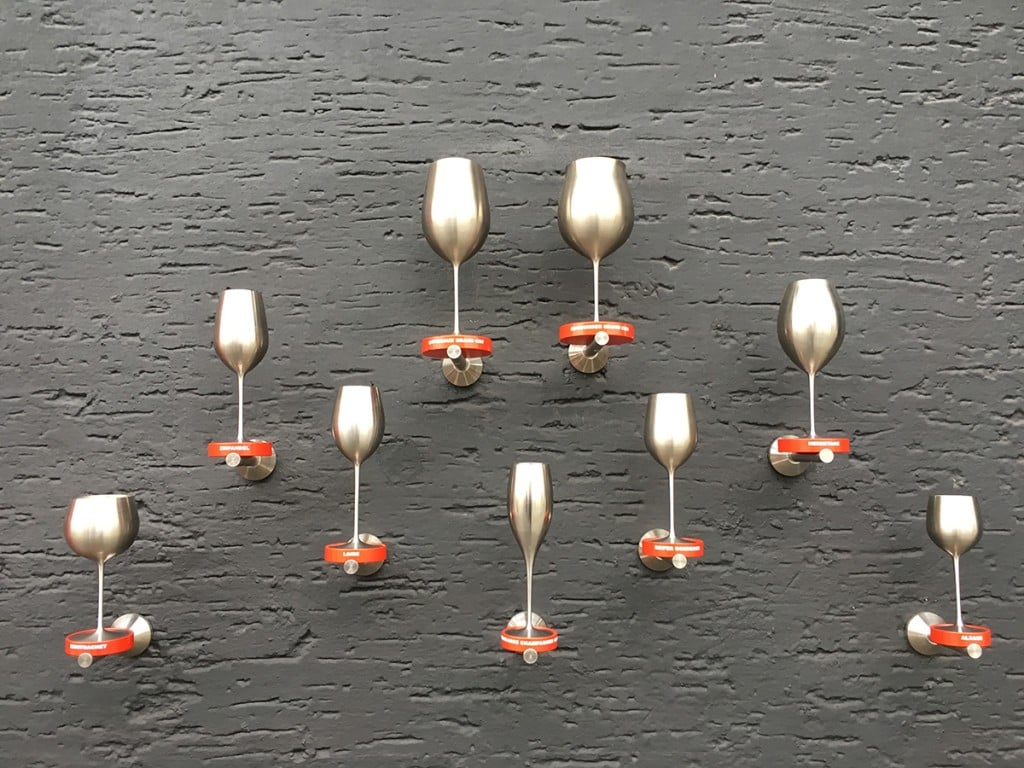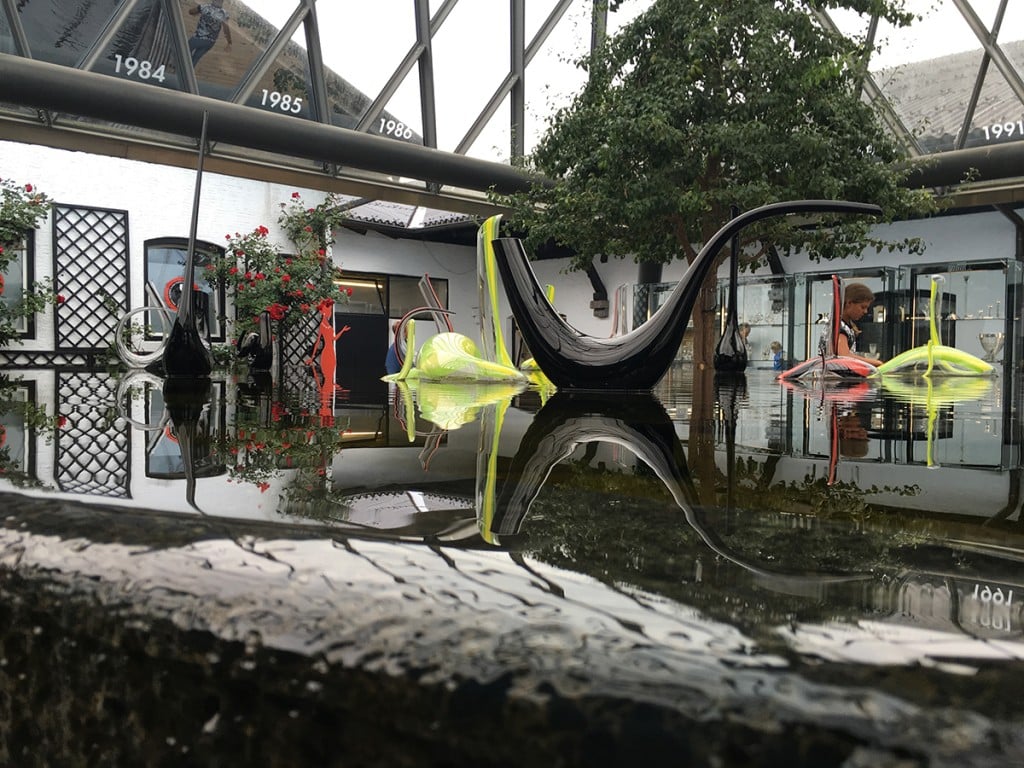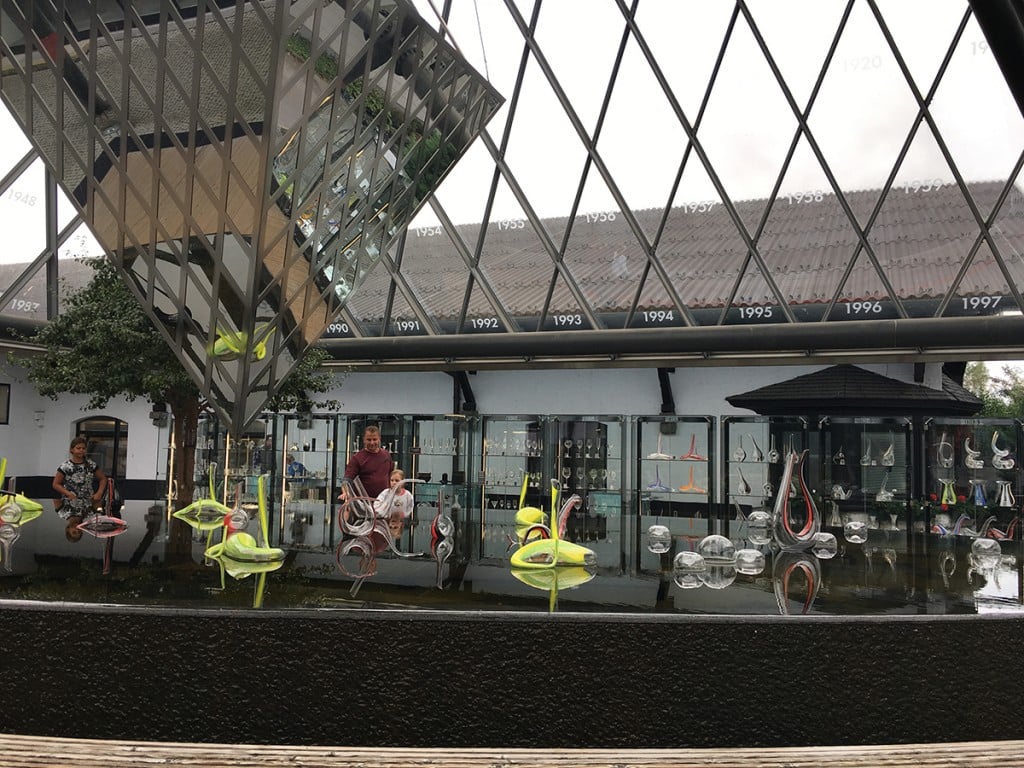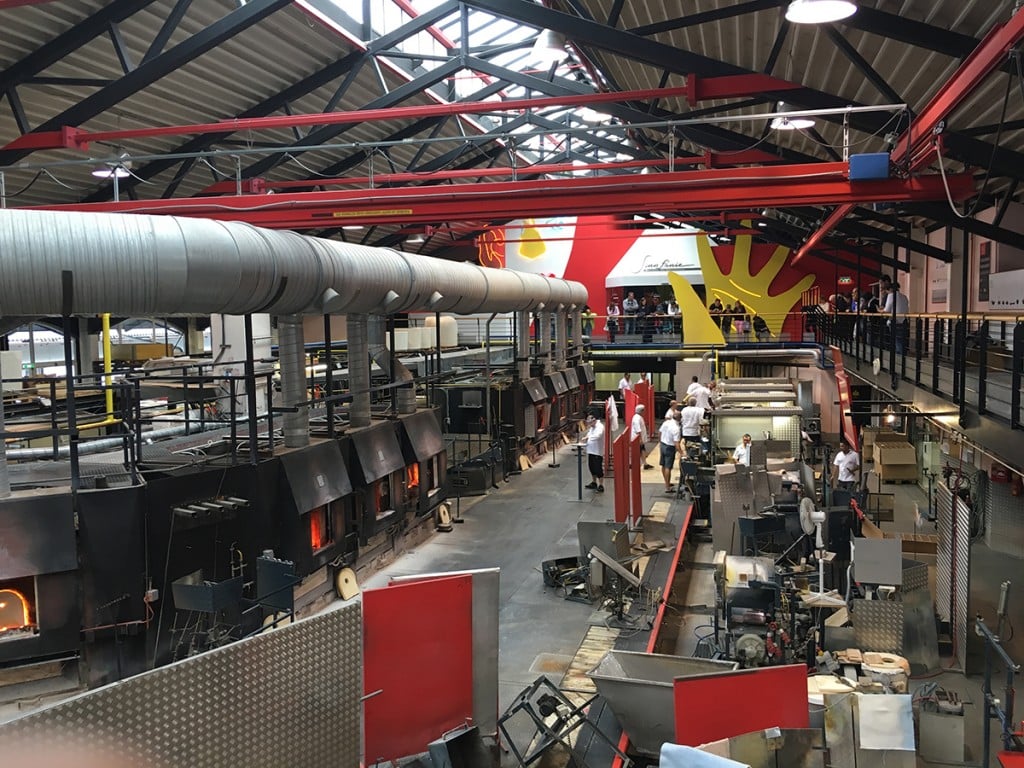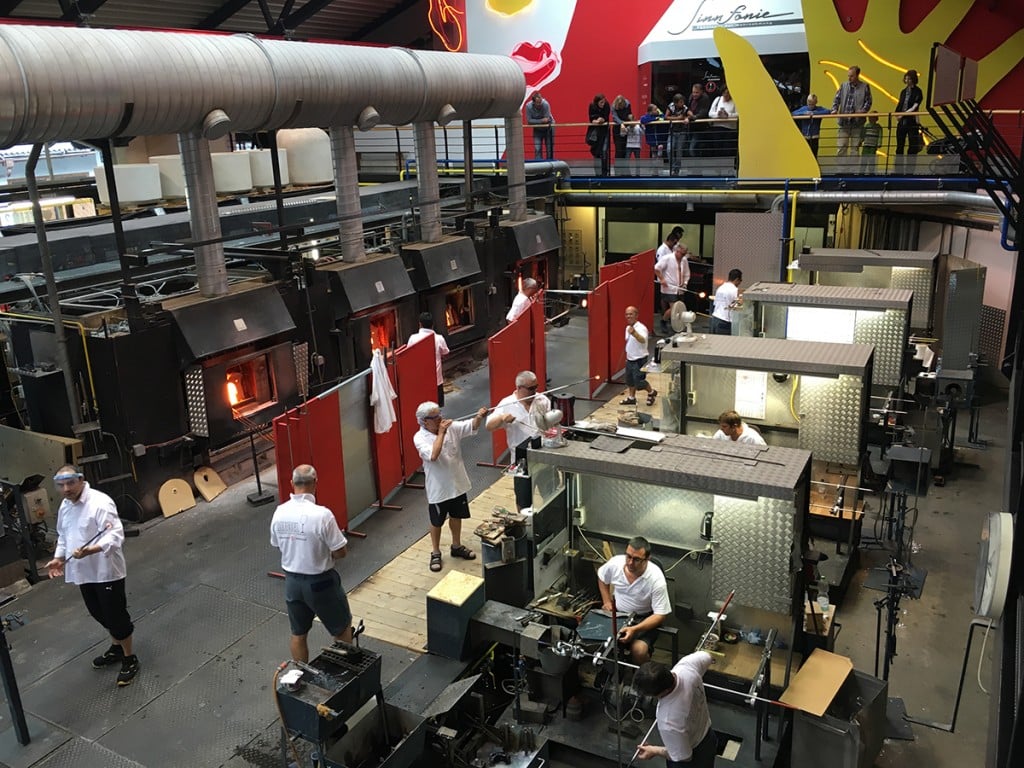Wine and crystal stemware. A triumph which is esthetic and epicurean at the same time. The last thirty years of the culture of dining have been revolutionary ones: now both connoisseurs and professionals know the wine glass, a fundamental element in the pleasure of tasting a wine. We are convinced that that a large part of its fortune is due to the loveliest form in which this container exists: the light and thin pure crystal glass. Otherwise it would simply be a utilitarian object, one without beauty or charm.
But when and where was this new type of consciousness born? There are hundreds of types of wine glasses available on the market which have been associated with one specific type of wine. By now it is a well known fact that each and every wine needs its own glass to bring out its own particular characteristics. A round form for a Cabernet, a tulip shape for Riesling, for Chardonnay a tallish and tapered glass. The shape and the thickness of the glass itself change perceptions of aroma and flavor.
The study of the choice of the glass, today virtually a “science”, has its roots in Bohemia, a region in the present-day Czech Republic. It was then further developed in Austria.
Claus Joseph Riedel, born in Paolaun in 1925, was a chemical engineer and a master glassmaker given his family’s work, a family with nine generations of artisan practice and activity under its belt. He had learned the art from his father and it was the only thing he was left with at the end of the second world war after the nationalization of industry and the confiscation of private property carried out by the communist government. Several intermediate steps, however, were fundamental. A member of the German army, he fought against partisans in Tuscany and Liguria in Italy and, captured at the end of the war, he spent ten months in a prison camp in Pisa. During his repatriation to Germany, he escaped, daringly, from the train which was passing through Austria. Here he remained and found work as a glass maker with Daniel Swarowsky who, in turn, had been apprenticed to Riedle’s own great-grandfather.
A turning point occurred in 1955 when the Austrian government asked him to take charge of the bankruptcy proceedings and then reactivate the Tiroler Glashütte glassworks. The operation was a successful one due, as well, to the work of Walter Riedel who, during the war, had produced glass vacuum tubes in Germany. Joining with his son, he founded the current Riedel company at Kufstein, located in Austria but on the border with Germany.
But the principal credit goes to Claus. He saw well before others that the form and the material of the wine glasses had a fundamental importance. The production which he developed was based principally – just as it is today – on the choice of the glass on the basis of the grape variety of the wine.

Georg Riedel
The two following genreations, Georg Riedel and his son Maximilian, gave further depth and development to these studies and expanded the production to two other factories in Germany, at Weiden and Amberg, reaching an overall production of 60 million glasses with 500 employees; there are, in addition, articles for home décor and accessories for wine and for the table. The production of glass is approximately 90 tons per day.
The content determines the form (according to the Bauhaus principal of form following function). The first line of wine glasses with different forms and dimensions was launched in 1961. It was were simple, undecorated stemware of thin blown glass which had – just as they do today – three principal components: an ample bowl or cup which held approximately 70 centiliters or over 23.5 fluid ounces; a long and thin stem; and a base made from the same crystal. A further development came in 1973 with what was called the “Sommelier Series”, for connoisseurs the finest wine glasses of all, which made the name and the fame of the house. Critics were immediately highly impressed. Robert Parker, among the most authoritative of wine journalists, wrote: “the best glasses both technically and hedonistically are those produced by Riedel. They deeply effect quality wine and I cannot emphasize what a difference they make”.
We in Italy had already perceived this difference in advance during a 1999 seminar with Georg Riedel himself and with Angelo Gaja, the Riedel’s Italian distributor; the occasion was the first International Symposium on Gewürztraminer in Termeno. An illuminating experience which can be repeated in Kufstein.
In addition to admiring the museum and the experience of the production of the wine glasses from the furnace to the blowing and to the construction of the stem and the base from the glass paste, it is also possible to view the factory and the shop and to taste the same wine, either red or white, in four different glasses. It is might seem a bit curious, but the difference which is perceived in a Grüner Veltliner from Brundlmayr is simply enormous. As is the case with the glasses in the “Superleggero” (Superlight) series, all hand-blown and hand-made. They cost approximately 80 euro a glass.
The visit consists of a visit and tour aimed at discovering the five senses, a view of the production process and the furnaces, a stop at the shop, and the assistance of a sommelier for the choice of glasses to purchase.
The prices range from a few euro per glass to approximately 80 euro for the finest series. But there are also the second and third choices (glasses with minor imperfections) with important discounts.
Finally, for those who wish to stay longer, we can suggest a visit to the castle-fortress. Among the restaurants we recommend the Alpenrose in the hotel of the same name, located in front of the Riedel shop, the l’Auracher Löchl with its creative cuisine, and the Goldener Löwe just off the pedestrian zone, traditionally Austrian in style.




